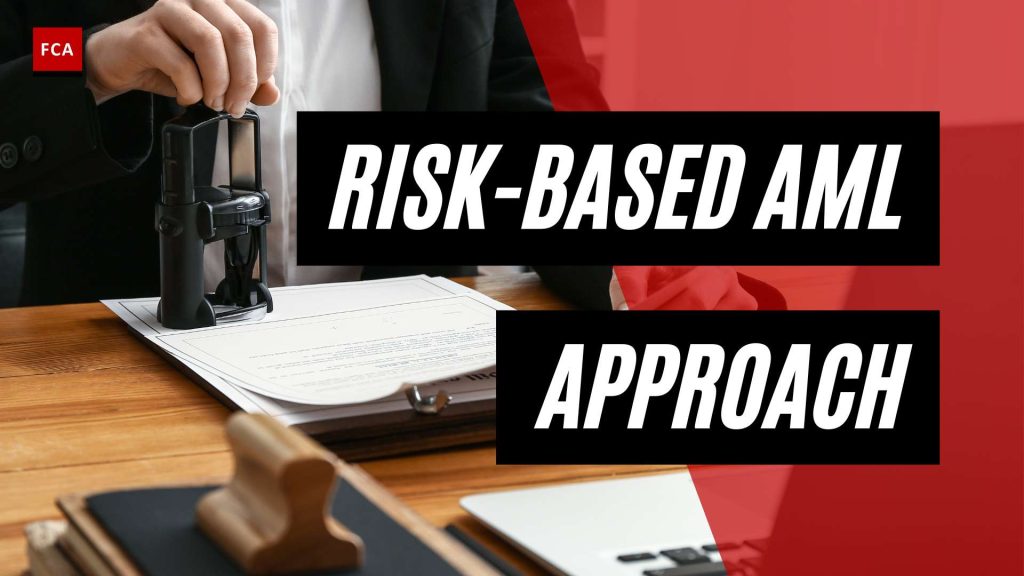Understanding AML Regulation
To effectively combat money laundering and terrorist financing, it is crucial to understand and adhere to Anti-Money Laundering (AML) regulations. AML compliance is of paramount importance for businesses operating in the financial sector and beyond. In this section, we will explore the importance of AML compliance and provide an overview of AML best practices.
Importance of AML Compliance
Implementing an AML risk-based approach is crucial for effective anti-money laundering (AML) and counter-terrorist financing (CTF) measures, as highlighted by the Financial Action Task Force (FATF) in its recommendations for member countries (FATF). By integrating AML measures into the risk management framework, businesses can safeguard themselves from financial crimes and regulatory investigations (LinkedIn). The integration of AML measures within the risk management framework bolsters an organization’s capabilities to effectively mitigate money laundering risks while ensuring compliance with regulations (LinkedIn).
The risk-based approach to AML compliance allows financial institutions to allocate their resources where the need is greatest, ensuring a more efficient use of resources in the fight against money laundering and terrorism financing. By focusing on risks with greater danger and potential harm, financial institutions can prevent non-compliance fines, reputational loss, revenue loss, and minimize illegal transfers.
Overview of AML Best Practices
AML best practices involve tailoring measures to mitigate specific risks faced by financial institutions. This includes implementing customer risk scoring, customer due diligence (CDD) procedures, and conducting anti-money laundering risk assessments for each customer (IDenfy). To implement a proper risk-based approach to AML, businesses should perform a risk assessment considering factors such as customer geography, vulnerabilities, infrastructure, regulatory requirements, operating industry, services and products offered, jurisdictions operated within, average transaction size and volume, number of high-risk customers, and customer acquisition methods.
In addition to risk assessments, businesses should establish comprehensive AML compliance programs that include policies, procedures, and systems for risk mitigation. These programs should encompass ongoing monitoring and reporting requirements to ensure timely detection and reporting of suspicious activities. Regular training and certifications for employees involved in AML compliance are also essential to keep up with evolving regulatory expectations.
By adhering to AML best practices, businesses can ensure compliance with regulatory requirements and actively contribute to combating financial crimes. Efficient resource allocation for risk mitigation, coupled with the ability to detect, prevent, and mitigate money laundering and terrorist financing risks, strengthens the overall AML compliance framework. It is an ongoing effort that requires continual assessment and adaptation, as regulatory changes and emerging risks demand continued vigilance (aml regulatory requirements; aml compliance regulations).
The Risk-Based Approach to AML Compliance
When it comes to anti-money laundering (AML) compliance, adopting a risk-based approach is crucial for financial institutions in their efforts to combat money laundering and terrorist financing. This approach allows institutions to prioritize their resources and focus on higher-risk areas, ensuring a more efficient and effective use of anti-financial crime measures. In this section, we will explore the definition, benefits, regulatory endorsement, and implementation of the risk-based approach to AML compliance.
Definition and Benefits of a Risk-Based Approach
The risk-based approach to AML compliance involves tailoring anti-money laundering measures based on the level of risk associated with customers, transactions, and business relationships. Financial institutions assess the potential risks they face and allocate resources accordingly to mitigate those risks (IDenfy). By adopting this approach, institutions can focus their efforts on areas that pose the greatest risk, ensuring a more strategic and targeted approach to risk management.
The benefits of implementing a risk-based approach are significant. Financial institutions can allocate their resources more efficiently, reducing the burden of compliance on lower-risk areas and directing their attention to higher-risk situations. This approach helps prevent non-compliance fines, reputational loss, revenue loss, and minimizes the opportunity for illegal transfers (IDenfy). By tailoring measures to specific risks, institutions can enhance their ability to detect and prevent money laundering and terrorist financing activities, ultimately contributing to the overall stability and integrity of the financial system.
Regulatory Endorsement of the Risk-Based Approach
The risk-based approach to AML compliance has gained significant recognition and endorsement from regulatory bodies worldwide. The Financial Action Task Force (FATF), an intergovernmental organization that sets global standards for AML and counter-terrorist financing measures, emphasizes the importance of adopting a risk-based approach in its recommendations for member countries. This endorsement highlights the international recognition of the risk-based approach as an effective means of combating financial crimes.
Implementation of a Risk-Based Approach
Implementing a risk-based approach requires financial institutions to conduct thorough AML risk assessments. These assessments involve identifying and analyzing money laundering and terrorist financing risks associated with various customer profiles, products, services, and geographic locations. Factors such as customer geography, vulnerabilities, infrastructure, regulatory requirements, and more should be considered in these risk assessments (IDenfy).
Once the risks are identified, institutions can tailor their AML measures to different risk levels. Enhanced due diligence measures are applied to higher-risk relationships, involving more in-depth customer due diligence procedures and ongoing monitoring. On the other hand, simplified measures are implemented for lower-risk relationships, allowing institutions to streamline their compliance processes while still maintaining a level of vigilance.
To effectively implement a risk-based approach, financial institutions must establish robust policies, procedures, and systems for risk mitigation. This includes ongoing monitoring and reporting requirements to detect and report suspicious activities. It is essential for institutions to continually assess and adapt their AML programs to keep up with evolving regulatory expectations and changes in the financial landscape. By doing so, they can ensure compliance with AML regulations and effectively combat financial crimes.
By adopting a risk-based approach to AML compliance, financial institutions can proactively manage risks, allocate resources efficiently, and implement targeted measures to combat money laundering and terrorist financing. This approach aligns with regulatory expectations, ensuring compliance while maintaining the integrity and stability of the financial system.
Conducting AML Risk Assessments
To effectively combat money laundering (ML) and terrorist financing (TF), financial institutions must conduct thorough AML risk assessments. These assessments help identify and analyze ML/TF risks, allowing institutions to implement appropriate risk mitigation measures. Here, we will explore the process of conducting AML risk assessments and the key factors to consider.
Identifying and Analyzing ML/TF Risks
The first step in an AML risk assessment is to identify and analyze the risks associated with ML/TF. Financial institutions should consider various factors to determine the level of risk they face. These factors include customer geography, vulnerabilities, infrastructure, regulatory requirements, operating industry, services and products offered, jurisdictions operated within, average transaction size and volume, number of high-risk customers, and customer acquisition methods.
By assessing these factors, institutions can gain a comprehensive understanding of their ML/TF risks. This allows them to focus their resources and efforts on areas with the greatest risks, ensuring effective risk mitigation. Identifying and analyzing ML/TF risks is an ongoing process that requires regular review and updates to adapt to changing circumstances and emerging threats.
Factors to Consider in Risk Assessment
When conducting an AML risk assessment, several factors should be considered to ensure a comprehensive evaluation. These factors help financial institutions determine the level of due diligence required for each customer and tailor their AML measures accordingly. Some key factors to consider in risk assessment include:
-
Customer Risk Scoring: Assigning risk scores to customers based on their profile, nature of business, transaction patterns, and geographic location helps institutions prioritize their due diligence efforts and allocate resources effectively.
-
Customer Due Diligence (CDD): Conducting thorough CDD procedures is essential in assessing the ML/TF risks associated with each customer. This includes verifying customer identities, understanding the nature of their business, and assessing the source of their funds. Enhanced due diligence (EDD) should be applied to higher-risk customers, products, and services (GBG Blog).
-
Anti-Money Laundering Risk Assessments: Regular risk assessments specifically focused on ML/TF risks help institutions evaluate the effectiveness of their AML measures and identify areas for improvement. These assessments should consider both internal and external factors, such as changes in regulations, emerging typologies, and industry trends (IDenfy).
-
Transaction Monitoring: Implementing robust transaction monitoring systems enables institutions to detect suspicious activities and anomalies that may indicate ML/TF risks. Continuous monitoring helps identify patterns and trends, facilitating the early detection and prevention of illicit activities.
By considering these factors in the risk assessment process, financial institutions can develop a deeper understanding of their ML/TF risks. This knowledge forms the foundation for implementing appropriate AML measures tailored to the specific risks they face. Regular reviews and updates to the risk assessment process are crucial to ensure the effectiveness of AML programs and compliance with evolving regulatory expectations.
Tailoring AML Measures to Risk Levels
In the realm of Anti-Money Laundering (AML) compliance, tailoring AML measures to risk levels is a fundamental aspect of implementing an effective AML program. The risk-based approach enables financial institutions to allocate their resources more efficiently and focus their efforts on higher-risk areas, while applying simplified measures to lower-risk relationships.
Enhanced Due Diligence for Higher-Risk Relationships
In the risk-based approach, financial institutions are required to conduct enhanced due diligence (EDD) for higher-risk relationships. This involves a deeper level of scrutiny and monitoring to mitigate the increased potential for money laundering and terrorist financing (Dow Jones).
When dealing with higher-risk relationships, financial institutions should consider several factors, such as the customer’s risk profile, the product or service being offered, and the geographical location (Dow Jones). Some examples of higher-risk relationships include politically exposed persons (PEPs), high-net-worth individuals, and customers from jurisdictions with a high risk of money laundering or terrorist financing.
To effectively implement EDD, financial institutions may employ various measures, such as:
- Conducting more comprehensive customer due diligence (CDD), including verifying the source of funds and identifying the ultimate beneficial owners.
- Performing ongoing monitoring of the higher-risk relationships to detect and report any suspicious transactions.
- Establishing stricter internal controls and procedures to ensure compliance with regulatory requirements.
- Assigning dedicated resources and specialized staff to manage and oversee higher-risk relationships.
By tailoring AML measures to higher-risk relationships, financial institutions can better address the potential risks associated with these customers and enhance their ability to combat financial crimes effectively.
Simplified Measures for Lower-Risk Relationships
In contrast to higher-risk relationships, lower-risk relationships may warrant simplified AML measures. The risk-based approach acknowledges that not all customers pose the same level of money laundering or terrorist financing risk.
Financial institutions can apply simplified measures for lower-risk relationships, which are commensurate with the level of risk identified. Simplified measures may include:
- Streamlined customer due diligence procedures, allowing for a more efficient onboarding process.
- Reduced frequency of ongoing monitoring, as the risks associated with these relationships are deemed lower.
- Exemptions from certain AML requirements, such as transaction reporting thresholds or record-keeping obligations.
By implementing simplified measures for lower-risk relationships, financial institutions can allocate their resources more effectively and focus their efforts on higher-risk areas. This approach offers flexibility while maintaining compliance with regulatory requirements.
It’s important to note that the determination of risk levels and the application of enhanced due diligence or simplified measures should be based on a comprehensive risk assessment conducted by the financial institution (Dow Jones). The risk assessment should take into account factors such as customer risk profiles, transactional patterns, and the overall risk environment.
By tailoring AML measures to risk levels, financial institutions can optimize their AML programs, allocate resources efficiently, and effectively combat money laundering and terrorist financing risks. It is crucial for institutions to continually reassess their AML programs and adapt their policies, procedures, and controls to address emerging risks and regulatory changes effectively (Dow Jones).
Implementing Effective AML Controls
To ensure compliance with anti-money laundering (AML) regulations, financial institutions must implement effective controls that mitigate the risks associated with money laundering and terrorist financing. This section will explore two crucial components of an effective AML control framework: policies, procedures, and systems for risk mitigation, as well as ongoing monitoring and reporting requirements.
Policies, Procedures, and Systems for Risk Mitigation
In order to effectively mitigate AML risks, financial institutions need to establish comprehensive policies, procedures, and systems. These components create a structured framework that guides employees in identifying and addressing potential money laundering and terrorist financing activities.
Policies and procedures play a critical role in setting the standards and expectations for AML compliance within an organization. They outline the steps and measures that employees should follow when conducting customer due diligence, reporting suspicious transactions, and maintaining accurate records. By establishing clear guidelines, financial institutions can ensure consistency and adherence to regulatory requirements.
Additionally, financial institutions should leverage technology and implement appropriate systems to support their AML efforts. AML compliance software can help automate processes, streamline customer due diligence, and enhance transaction monitoring capabilities. These systems facilitate the identification of suspicious activities, enabling timely reporting and intervention. By leveraging technology, financial institutions can improve efficiency and accuracy in their AML compliance efforts.
Ongoing Monitoring and Reporting Requirements
Ongoing monitoring is a crucial aspect of effective AML controls. Financial institutions must continuously review customer transactions and activities to detect any unusual patterns or red flags that may indicate potential money laundering or terrorist financing.
To facilitate ongoing monitoring, financial institutions should establish robust systems that enable the collection, analysis, and reporting of customer data. These systems help identify and flag transactions that deviate from established patterns or exhibit characteristics associated with illicit activities. By promptly identifying and reporting suspicious transactions, financial institutions play a vital role in combating financial crimes.
Reporting requirements vary across jurisdictions, but financial institutions must comply with applicable regulations and promptly notify the relevant authorities of any suspicious transactions. Timely reporting ensures that law enforcement agencies can investigate and take appropriate action to disrupt illicit activities.
It is important for financial institutions to regularly review and update their AML policies, procedures, and systems to keep pace with evolving regulatory expectations and emerging risks. By staying abreast of changes in AML regulations and incorporating lessons learned from industry trends, financial institutions can continually enhance their AML control framework and effectively combat financial crimes.
By implementing robust policies, procedures, and systems, and maintaining ongoing monitoring and reporting mechanisms, financial institutions can strengthen their AML controls and contribute to the global fight against money laundering and terrorist financing. To learn more about AML compliance, you can refer to our article on AML compliance program and explore the AML compliance checklist to ensure comprehensive adherence to AML regulations.
Adapting AML Programs to Regulatory Changes
In the ever-evolving landscape of anti-money laundering (AML) regulation, financial institutions must stay vigilant and adapt their AML programs to meet evolving regulatory expectations. This adaptability is crucial to ensure ongoing compliance and effective mitigation of money laundering and terrorist financing risks. Two key aspects of adapting AML programs to regulatory changes are understanding evolving regulatory expectations and continually assessing and adapting AML programs.
Evolving Regulatory Expectations
Regulatory expectations regarding AML compliance and the risk-based approach can change over time. Financial institutions must closely monitor regulatory updates and guidance to stay informed about these evolving expectations. This includes understanding changes in laws, regulations, and industry best practices.
By staying up-to-date with evolving regulatory expectations, financial institutions can proactively adjust their AML programs to align with the latest requirements. This may involve updating policies, procedures, and controls to address emerging risks and regulatory changes effectively.
Continual Assessment and Adaptation of AML Programs
Implementing a risk-based approach requires financial institutions to continually assess and adapt their AML programs. This ongoing effort is necessary to detect, prevent, and mitigate money laundering and terrorist financing risks effectively. Financial institutions should conduct regular assessments to identify and analyze ML/TF (money laundering and terrorist financing) risks associated with their operations.
A proper risk assessment in the risk-based approach involves considering factors such as the customer’s risk profile, the product or service being offered, and the geographical location. This helps in identifying high-risk entities and transactions that require enhanced due diligence (Dow Jones).
Based on the risk assessment, financial institutions can tailor their AML measures to different risk levels. This may involve implementing enhanced due diligence measures for higher-risk relationships and simplified measures for lower-risk relationships. It’s important to note that the level of due diligence and ongoing monitoring should be commensurate with the identified risk level.
Continual assessment and adaptation of AML programs also include ongoing monitoring and reporting requirements. Financial institutions must establish robust policies, procedures, and systems to mitigate risks effectively. This includes conducting regular transaction monitoring, reviewing customer information, and reporting suspicious activities as required by regulatory authorities.
By continually assessing and adapting AML programs, financial institutions can ensure compliance with regulatory requirements and effectively combat financial crimes. Efficient resource allocation for risk mitigation and the use of advanced technologies, such as AML compliance software, can further enhance the effectiveness of AML programs.
In conclusion, adapting AML programs to regulatory changes is crucial for maintaining compliance and effectively combating money laundering and terrorist financing risks. Financial institutions must stay informed about evolving regulatory expectations and continually assess and adapt their AML programs to align with the latest requirements and effectively mitigate risks.
Ensuring Compliance and Combating Financial Crimes
To effectively combat financial crimes and ensure compliance with anti-money laundering (AML) regulations, implementing a risk-based approach is crucial. This approach enables organizations to allocate their resources efficiently, prioritize higher-risk areas, and focus on mitigating the risks associated with money laundering and terrorist financing.
Efficient Resource Allocation for Risk Mitigation
Implementing a risk-based approach helps organizations prevent non-compliance fines, reputational loss, revenue loss, and minimizes illegal transfers by prioritizing risks with greater danger and potential harm. By assessing and understanding the risks involved, financial institutions can allocate their resources effectively, focusing on higher-risk areas rather than applying equally stringent measures to all customers. This approach offers more flexibility and effectiveness in identifying AML and CFT risks (GBG Blog).
Financial institutions must conduct thorough risk assessments to identify the potential risks associated with money laundering and terrorist financing. Through these assessments, they can allocate their resources appropriately, deploying more resources to areas with higher risk. This ensures that the institution’s efforts are targeted and proportional to the level of risk identified.
Detecting, Preventing, and Mitigating ML/TF Risks
The risk-based approach requires financial institutions to implement appropriate controls, policies, procedures, and systems to detect, prevent, and mitigate money laundering (ML) and terrorist financing (TF) risks. The level of due diligence and ongoing monitoring conducted by the institution should align with the level of risk identified.
Financial institutions must continuously monitor customer transactions, behaviors, and patterns to detect any suspicious activity that may indicate potential ML/TF risks. By leveraging advanced technologies and AML compliance software, institutions can automate the monitoring process, flagging any unusual or suspicious transactions for further investigation. This ongoing monitoring helps organizations stay vigilant and promptly respond to potential risks.
Furthermore, institutions should implement robust customer identification programs, conduct thorough customer due diligence, and enhance their transaction monitoring capabilities. By combining these measures, financial institutions can strengthen their ability to detect and prevent ML/TF activities.
By adopting a risk-based approach and implementing effective AML controls, financial institutions can ensure compliance with regulatory requirements while actively combating financial crimes. This approach allows organizations to tailor their AML programs to the specific risks they face, promoting a more efficient and targeted approach to fighting money laundering and terrorist financing. Effective resource allocation, continuous monitoring, and the implementation of appropriate measures are essential in maintaining a robust AML compliance program.








